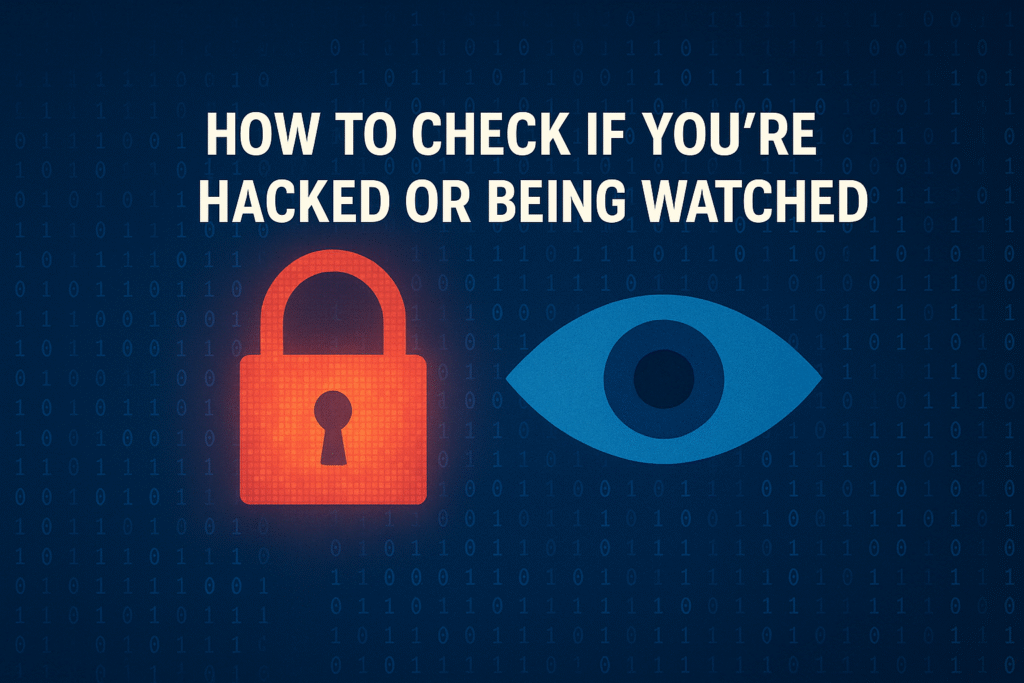🔐 Introduction
Let’s learn free tools to detect hacking 2025. In an era of increasing digital surveillance, cyberattacks, and spyware, the question isn’t “if” but “when” someone may try to hack or monitor your device. From hidden keyloggers to unauthorized webcam access, it’s crucial to regularly scan your devices to make sure you’re not being watched.
In this 2025 guide, we’ll cover the top 10 free tools detect hacking to help you check if you’ve been hacked and how to secure your devices and online presence.
✅ 1. Have I Been Pwned
Website: https://haveibeenpwned.com
Best For: Checking if your email, phone, or password has been exposed in a data breach
🔍 What It Does:
“Have I Been Pwned” is a popular and trusted tool that scans public data breach databases to see if your personal information has been compromised.
⭐ Features:
- Check if your email/password is found in known breaches
- Get notified of future breaches
- Secure password check
🚨 Why It Matters:
If your email appears in a breach, your credentials could be used in credential stuffing attacks or identity theft.
✅ 2. GlassWire
Website: https://www.glasswire.com
Best For: Monitoring network activity and detecting suspicious traffic
🔍 What It Does:
GlassWire is a free network security monitor and firewall that visualizes real-time network traffic.
⭐ Features:
- See which apps are using the internet
- Spot strange activity (unauthorized connections)
- Get alerted to unknown devices on your Wi-Fi
🚨 Why It Matters:
If someone is watching your device or controlling it remotely, you’ll likely see strange network spikes or unfamiliar hosts connecting.
✅ 3. Malwarebytes Free
Website: https://www.malwarebytes.com
Best For: Detecting and removing malware, spyware, and keyloggers
🔍 What It Does:
Malwarebytes scans your system for hidden threats that antivirus programs often miss—like rootkits, adware, and spyware.
⭐ Features:
- Manual and scheduled scans
- Heuristic-based detection
- Lightweight and fast
🚨 Why It Matters:
Spyware and keyloggers often hide deep in your system. Malwarebytes excels at detecting these sneaky threats.
✅ 4. Windows Defender Offline Scan (Now Microsoft Defender)
Built-In for Windows 10 & 11
Best For: Deep malware scanning even when your OS is offline
🔍 What It Does:
Microsoft Defender Offline Scan reboots your PC and performs a deep scan before Windows loads, catching rootkits and persistent threats.
⭐ Features:
- Offline boot scan
- High detection rate for persistent malware
- Free and pre-installed
🚨 Why It Matters:
Hackers use boot-level malware to evade traditional scanners. Defender’s offline mode bypasses that.
✅ 5. Kaspersky Security Cloud Free
Website: https://www.kaspersky.com/free-antivirus
Best For: Cloud-based real-time threat detection
🔍 What It Does:
Kaspersky Security Cloud protects against viruses, phishing, ransomware, and even suspicious app behavior.
⭐ Features:
- Smart alerts for suspicious behavior
- Account check for leaked credentials
- Light impact on system performance
🚨 Why It Matters:
Its behavioral analysis feature can alert you to unusual activity or spying attempts in real time.
✅ 6. Netstat + Command Prompt (Advanced Users)
Platform: Built-in on Windows/macOS/Linux
Best For: Identifying unauthorized remote connections
🔍 What It Does:
The netstat command shows open ports and connections on your device, which can help you spot remote access tools or trojans.
⭐ Features:
- Command-line output of all network activity
- See IP addresses and ports connected
- Useful for checking if someone is remotely accessing your PC
🚨 Why It Matters:
Remote access backdoors can silently let hackers view or control your system. netstat can help catch them in the act.
✅ 7. Who’s On My Wi-Fi
Website: https://www.whoisonmywifi.com
Best For: Detecting unauthorized users on your Wi-Fi
🔍 What It Does:
This tool scans your network for connected devices and helps you identify intruders who may be spying via the same network.
⭐ Features:
- Device discovery with MAC/IP addresses
- Alerts for new/unknown devices
- Bandwidth usage per device
🚨 Why It Matters:
Hackers can compromise smart devices (like cameras or routers) and spy on your network traffic if they’re on your Wi-Fi.
✅ 8. Sysinternals Process Explorer
Website: https://docs.microsoft.com/en-us/sysinternals/downloads/process-explorer
Best For: Deep process inspection for hidden malware or keyloggers
🔍 What It Does:
Process Explorer shows all running programs and background processes—far more detail than Task Manager.
⭐ Features:
- Analyze suspicious processes
- Kill hidden apps or services
- Trace DLLs or services running under a process
🚨 Why It Matters:
Advanced spyware or keyloggers may not show in Task Manager. Process Explorer can uncover them.
✅ 9. Exodus Privacy (for Android Users)
Website: https://exodus-privacy.eu.org
Best For: Checking app permissions and trackers on Android
🔍 What It Does:
Exodus scans Android apps for embedded trackers, data harvesting tools, and over-permissioned features.
⭐ Features:
- Analyze apps for spyware and trackers
- Check which companies get your data
- Works with any Android app
🚨 Why It Matters:
Many apps spy on users via overreaching permissions. Exodus shows you exactly who’s watching.
✅ 10. ClamAV (for Linux Users)
Website: https://www.clamav.net
Best For: Open-source antivirus scanning for Linux machines
🔍 What It Does:
ClamAV is a trusted antivirus engine for Linux systems, great for scanning servers or desktops for viruses and rootkits.
⭐ Features:
- Command-line scanning
- Detects malware, trojans, and infected emails
- Cross-platform file support
🚨 Why It Matters:
Linux isn’t immune to attacks. In fact, server environments are prime targets. ClamAV helps secure your system.
🛡️ Bonus Tips to Stay Secure
- Enable multi-factor authentication (MFA) on all accounts.
- Cover your webcam when not in use.
- Use a VPN when using public Wi-Fi.
- Regularly check your account login history (Google, Facebook, etc.).
- Keep software and OS up to date.
📌 Final Thoughts
Being watched or hacked isn’t science fiction—it’s happening every day. With these free and powerful tools, you can take back control of your digital privacy in 2025.
Make scanning your devices and monitoring activity part of your monthly security routine. It’s free, easy, and could save you from identity theft or financial loss.


